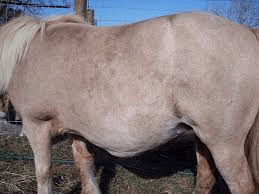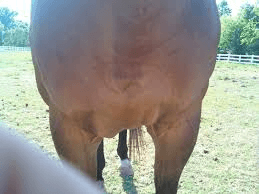“Oh no, Nellie’s front leg is swelled up. What am I going to do?”
Too often that’s been a horse owners exclamation when getting ready to ride their horse.
It truly is a major concern that deserves attention now.
“There are basically three types of swellings: noninfectious, infectious and the hematoma, which is caused by broken blood vessels,” according to veterinarian Dr. L.D. “Max” Walker Jr.
Most swellings are characterized by an excess of watery fluid collecting in the body tissues, but the hematoma is not.
”The hematoma is a localized collection of blood that is either clotted or unclotted in an area of tissue, an organ or some other body space,” Walker said. It is usually caused by trauma, such as a kick or bite.



“Treatment of the hematoma depends on how long the enlargement has been present and where it is on the horse,” Walker said.
“Hematomas located on the side of the horse are not as large or as difficult to heal as those on the thigh, abdomen and chest,” he said.
Early treatment of a hematoma includes inactivating the horse so that the bleeding will subside.
“Put the horse in an enclosed area so that he remains inactive,” Walker said. “Then apply cold water or ice compresses to the hematoma. The cold will aid in shrinking the blood vessels.”
The horse should be left in the stall for five days so that the bleeding stops and the blood will clot. “Once the bleeding stops, the hematoma will not increase in size. But if the horse is allowed to run around, the bleeding can reoccur,” Walker said.
Normally, with a hematoma, the skin will not break. However, an extremely enlarged area is often punctured so that fluid is released and healing can begin.
“If the fluid is straw-colored, then more time is needed before the area is drained so that the blood clots,” the veterinarian explained.
The straw-colored fluid is often removed, but the blood clot is not because that would cause a defect or indentation in the muscle after the hematoma heals.
“Use a new needle and clean the skin,” Walker advised. “If you take bacteria inside the hematoma, then you set up an infection. The hematoma will usually abscess, and that’s when you get into problems.”
The horse is also given antibiotics and a tetanus injection during treatment.
After the hematoma is drained, it is usually allowed to heal on its own. But after about 10 days to two weeks, the horse’s healing process can be stimulated by applying warm towels on the area, which opens up the blood vessels, and applying dimethyl sulfoxide.
Hematomas that are the size of ping-pong or tennis balls usually are not punctured.
“They normally take care of themselves; the swelling will go down and there’s no problem,” Walker said.
The healing time for a horse’s hematoma depends on its size. The smaller ones will usually disappear in about 10 days. The larger ones can take as long as a month to heal.
“Whereas a hematoma is caused by bleeding, an infectious type of swelling often develops from a cut or puncture wound,” Walker said.
Four signs in an inflammatory situation: heat, pain, swelling and redness of the skin
“Treatment includes antibiotics, draining any serum or pus and cleaning the wound,” Walker advised.
With the non-infectious swelling, the area will normally not show signs of heat and redness.
“Sometimes the swelling is a little painful. This kind of swelling will pit when you push your finger against it. You can produce an indentation in the skin,” the veterinarian said.
“A good example of a non-infectious swelling is the swelling a mare under her belly before she foals and the horse’s legs also swell up,” Walker commented.
Some swellings are caused by allergic reactions, and these are often displayed as welts or bumps all over the horse’s body.
“Allergic reactions can be caused by such things as fly sprays, too much protein in the feed, or an insect bite,” Dr. Walker said. “These should be treated with an antihistamine, which reduces the swelling. If the swelling continues, it can cause some skin loss.”
“Swellings should not be taken lightly,” Walker emphasized.
“They need to be watched and closely inspected. If the swelling does not improve, or if it worsens, a veterinarian must be contacted,” Walker insisted.
